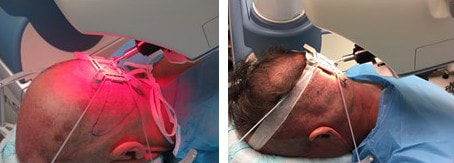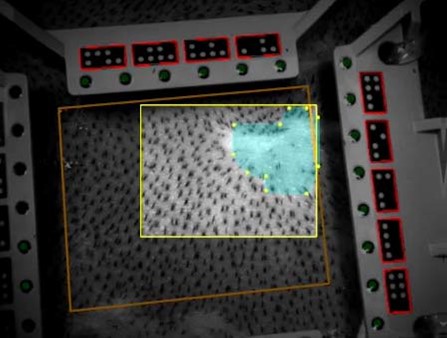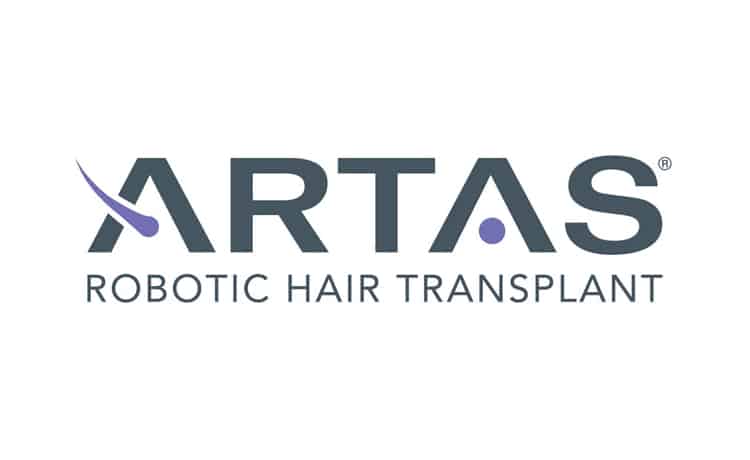Dr. Robert M. Bernstein were guest speakers in the ARTAS webcast series where they discussed “What’s New in Robotic FUE”. In this live webinar, conducted by Restoration Robotics, Dr. Bernstein spoke to over 100 fellow surgeons and their staff on advances in robotic hair transplantation and led a Q and A session about the ARTAS Robotic System following the presentation. The main topics of discussion were the four key areas of the Robotic FUE procedure that are improved by the ARTAS 9x; increased speed, accuracy, and functionality, and advances in the use of artificial intelligence.
To hear what Dr. Bernstein had to say, watch the archived video (registration required).
Increased Speed
The ARTAS 9x is 20% faster than the ARTAS 8x and has a dissection cycle of less than two seconds. This new upgrade also allows for graft dissection and extraction to be performed simultaneously, increasing the speed of the procedure. Prior versions of the ARTAS robot used a red LED light which was too harsh on the human eye. The ARTAS 9x has a white LED light that allows grafts to be removed from scalp at the same time that the robot proceeds with the excision of additional grafts. The newest version of the robot uses a yellow tensioner, rather than the previous white one, enabling the robotic optical system to identify the tensioner from a greater distance. This eliminates the two manual commands needed to put the arm into position and, thus, increases the speed of the procedure.
 Previous versions of the robot used a red LED light (left), ARTAS 9x uses a white light (right)
Previous versions of the robot used a red LED light (left), ARTAS 9x uses a white light (right)Increased Accuracy
The ARTAS 9x provides physicians the option of using smaller needles with the addition of a 0.8mm needle. The smaller needle reduces scarring and enables more precise graft extraction.
“Compared to other versions of the ARTAS Robot, there is a dramatically less need for the physician to make modifications to the ARTAS 9x system. It seemed like we were driving a stick shift car, where now much of it is automatic.”
– Dr. Bernstein
Increased Functionality
Physical improvements to the robot include a smaller robotic head, improved headrest, new harvesting halo, and a robotic arm extender. The new 9x has a smaller head that allows the robot to move around the patient to approach their scalp at a more acute angle. This allows the angle of site making to go down to 30 degrees and harvesting down to 35 degrees. The site making headrest of the 9x does not include the protruding edges found in the 8x. This gives clearance for the robot to have more site making options. The new harvesting halo also places less downward pressure on the patient’s head with tension being more lateral but just as effective in stabilizing the scalp for precise excision. The 9x has an extender that allows the arm to more easily reach around the sides of the patient’s head without having to reposition the patient.
Use of Artificial Intelligence
The use of artificial intelligence (AI) in the 9x Robot leads to greater consistency and speed. AI aspects found in the ARTAS 9x include automatic collision recovery, empty site warning, automatic scar detection and new ARTAS Hair Studio technology. The motion sensor is in the arm where it attaches to head and the screen shows the physician what is happening in real-time so the position of the robotic can be adjusted easily.
Dr. Bernstein said:
“The ARTAS 8x required 6 steps to accomplish this; the 9x has a one-touch system with one button that retracts the head back to the neutral position.”
 ARTAS 9x detects and blocks harvesting from areas with scarring
ARTAS 9x detects and blocks harvesting from areas with scarringThe ARTAS has a new empty site warning capability that signals the physician to make adjustments when the harvesting is sub-optimal. The ARTAS 9x also has an automatic scar detection function that allows the robot to detect areas with low or no hair density so that these areas can be automatically blocked from further harvesting. This feature is particularly useful in cases where there is significant scarring from prior surgery. There have also been advances made to the ARTAS Hair Studio. In 9x, only one photo is needed to create a 3D image of the patient’s scalp as opposed to the prior iterations that required up to five.
It is important to keep in mind that these improvements work together to increase the overall speed, accuracy and efficiency of Robotic FUE procedures.
Bernstein Medical and the ARTAS Robot
In 2011, Bernstein Medical became one of the first practices in the world to use the computer-driven technology of the ARTAS Robotic System in FUE hair transplant procedures. They have played an important role in the development of the technology ever since. Bernstein Medical is a beta-testing site for new enhancements and features to the ARTAS robot and Dr. Bernstein is on the Medical Advisory Board to Restoration Robotics, the company that makes the ARTAS robot.







